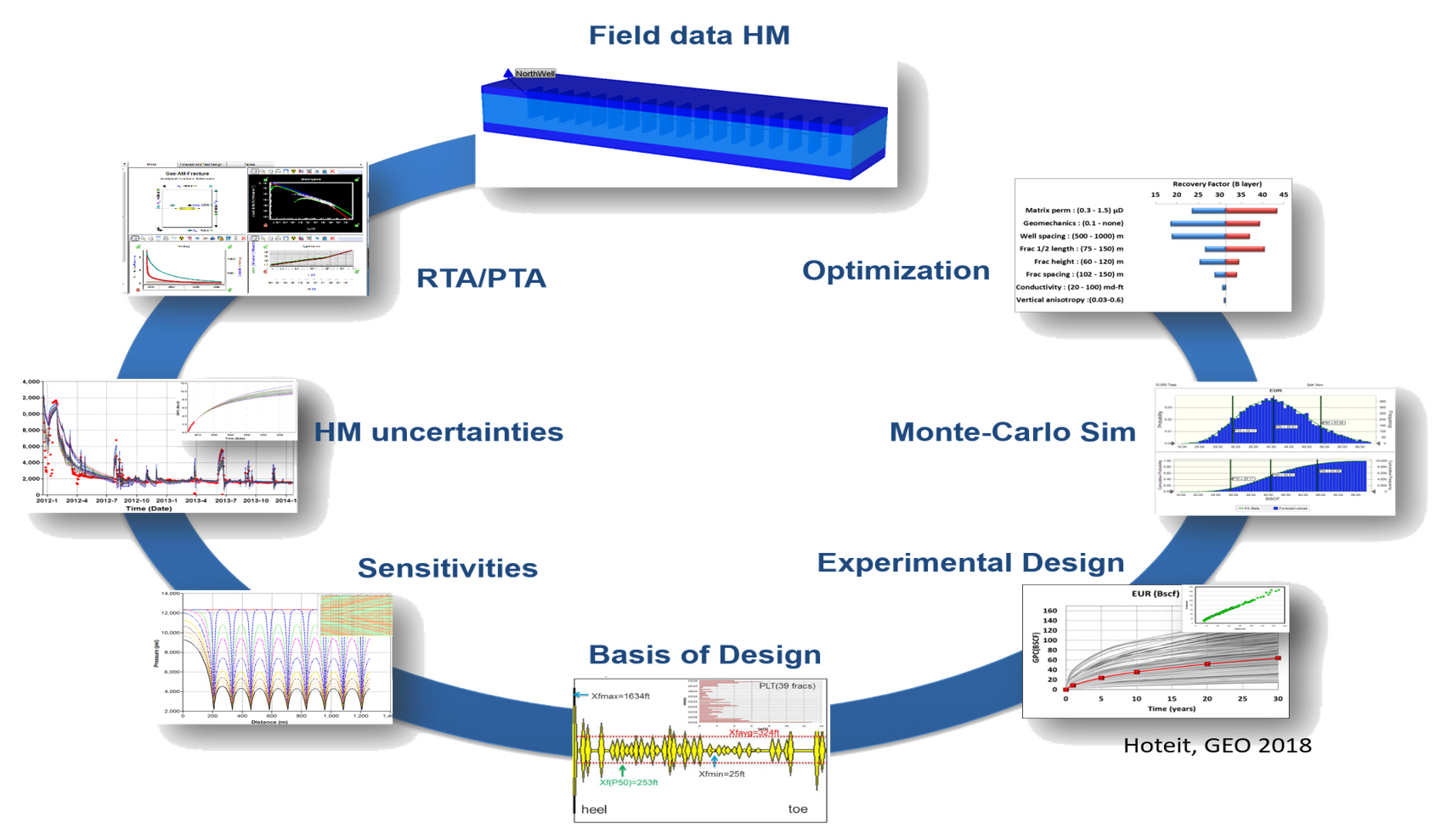
The industry interest in unlocking unconventional gas and liquid-rich hydrocarbon systems is likely to grow. In tight formation, the pore size distribution is 2-3 orders of magnitude smaller than those in conventional reservoirs. This complexity usually introduces significant impact on hydrocarbon phase continuity and capillary forces. Some major challenges in modeling unconventional resources include the understanding of the fundamental flow mechanisms, phase behavior aspects, geomechanical effects, natural fractures contribution and the significance of the stimulated reservoir volume from micro-seismic events. The objective of this research is to leverage on data analytics, analytical-based methods such as rate and pressure transient analyses (RTA, PTA), and reservoir simulations to develop a modeling workflow for unconventional resources.
